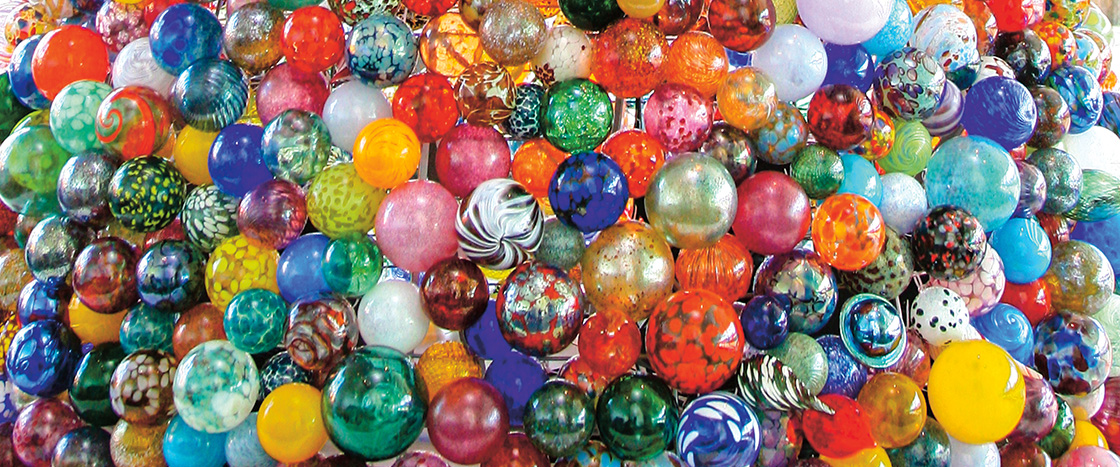Corning Museum of Glass
Glass ornaments are a sure sign that the holidays are here. The first glass ornaments were made in the early 1800s in Germany. At that time, people typically
used food to decorate Christmas trees. According to folklore, a poor German glassmaker didn’t have enough food to put on his tree—so he made decorations out of glass!
Germany became famous for its glass ornaments, which were popular in the U.S. But in the early 1940s, the U.S. was fighting against Germany in World War II. During the war, the U.S. didn’t buy German-made glass ornaments.
That’s when Corning Glass Works in Western New York began making ornaments out of glittering glass. Today, artists and factory workers there create all kinds of glassware!
Glass ornaments are a sure sign the holidays are here. Glass ornaments were first made in Germany in the early 1800s. People at that time used food to decorate Christmas trees. A folk tale says a poor German glassmaker didn’t have enough food for his tree. So he made decorations out of glass!
Germany became famous for its glass ornaments. They were popular in the U.S. But in the early 1940s, the U.S. was fighting Germany in World War II. At that time, Americans didn’t buy German products.
That’s when the Corning Glass Works began making glass ornaments. It’s a U.S. company in Western New York. Today, workers there create all kinds of glassware!

